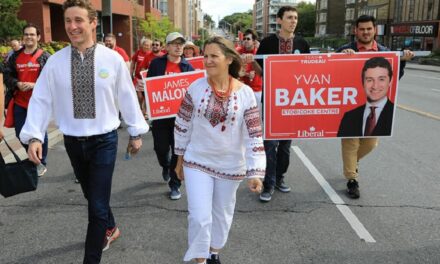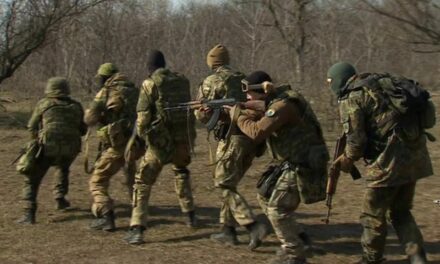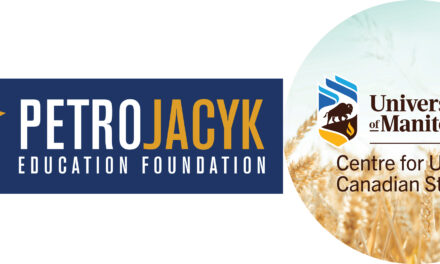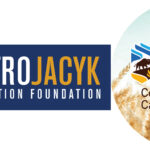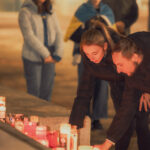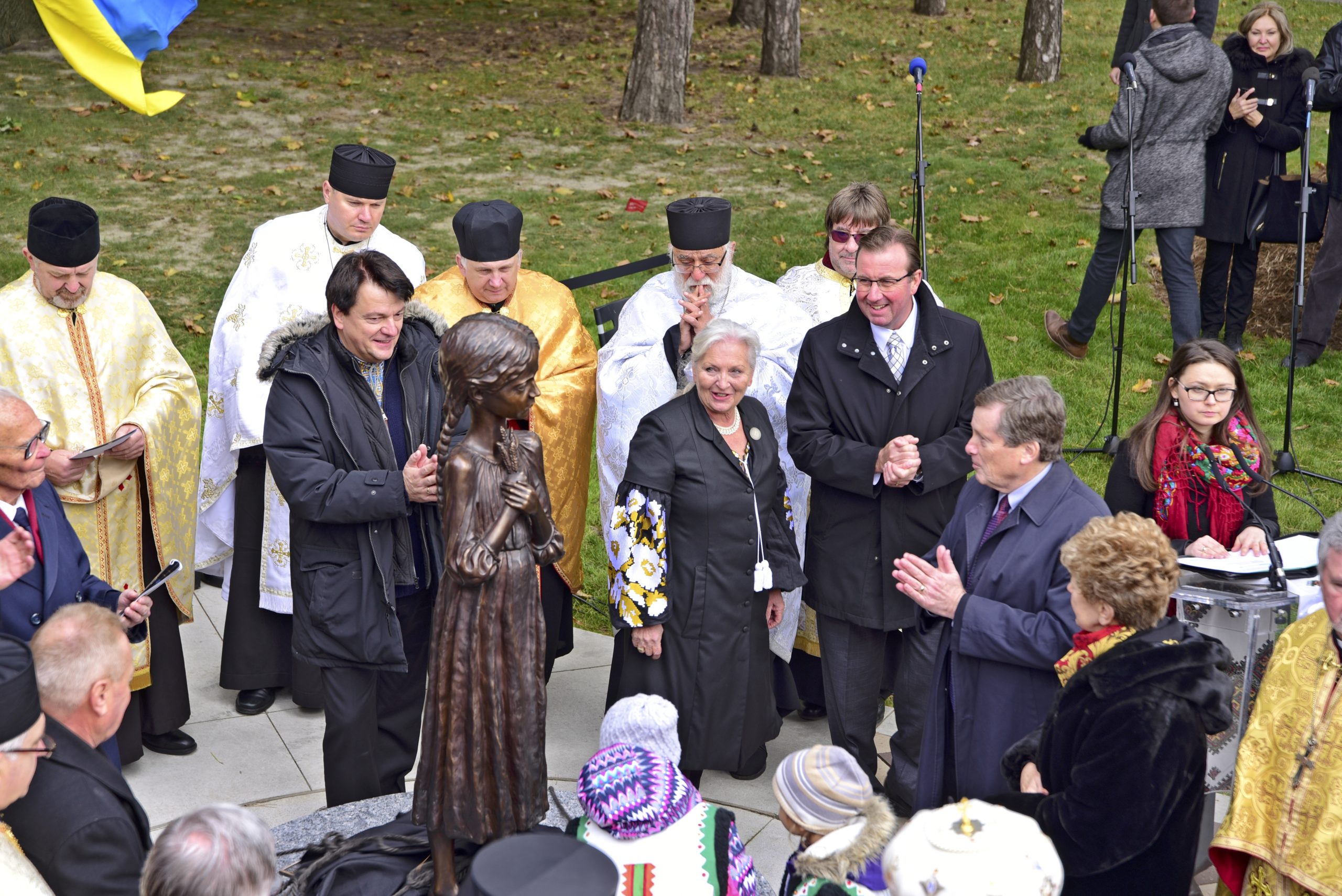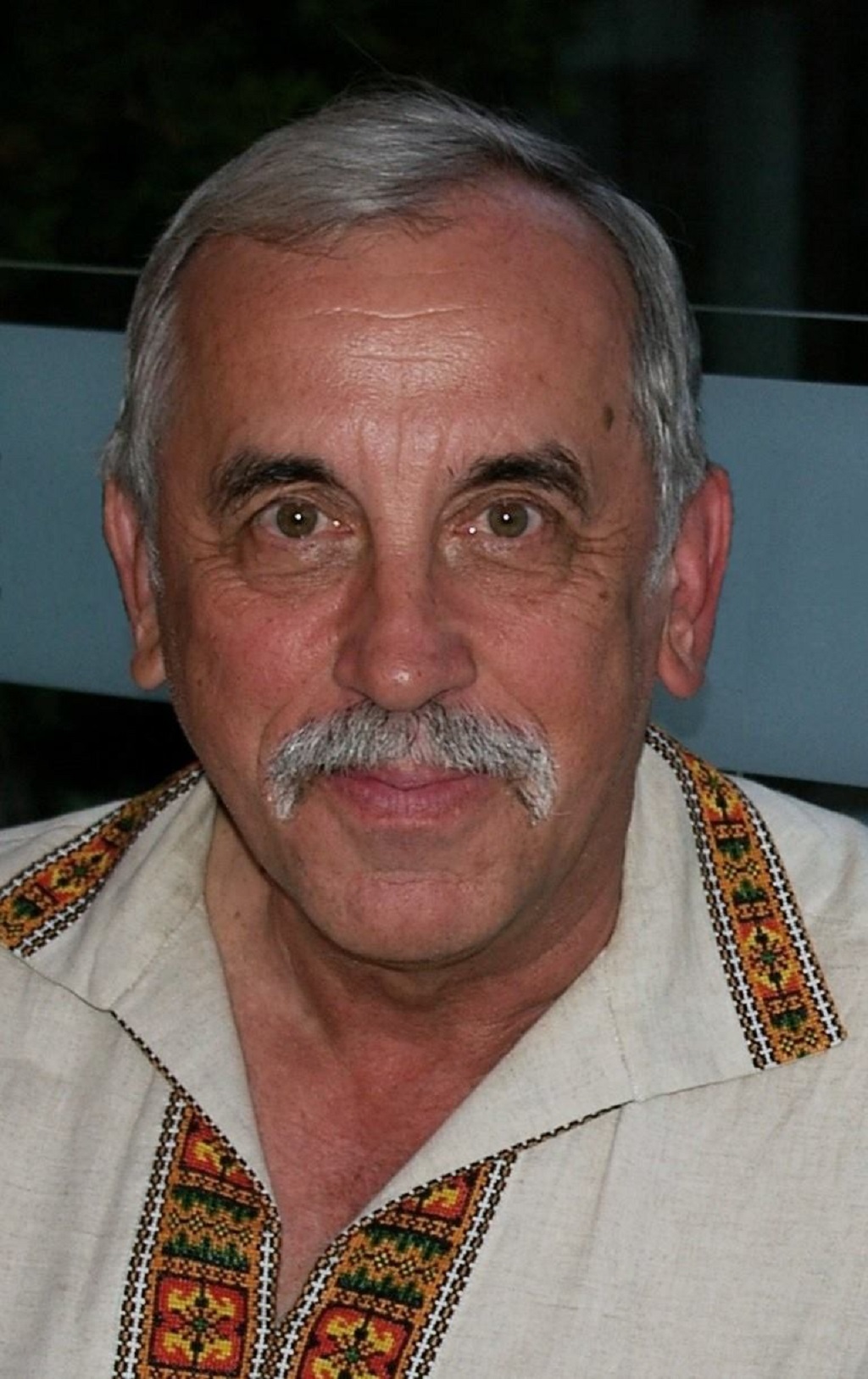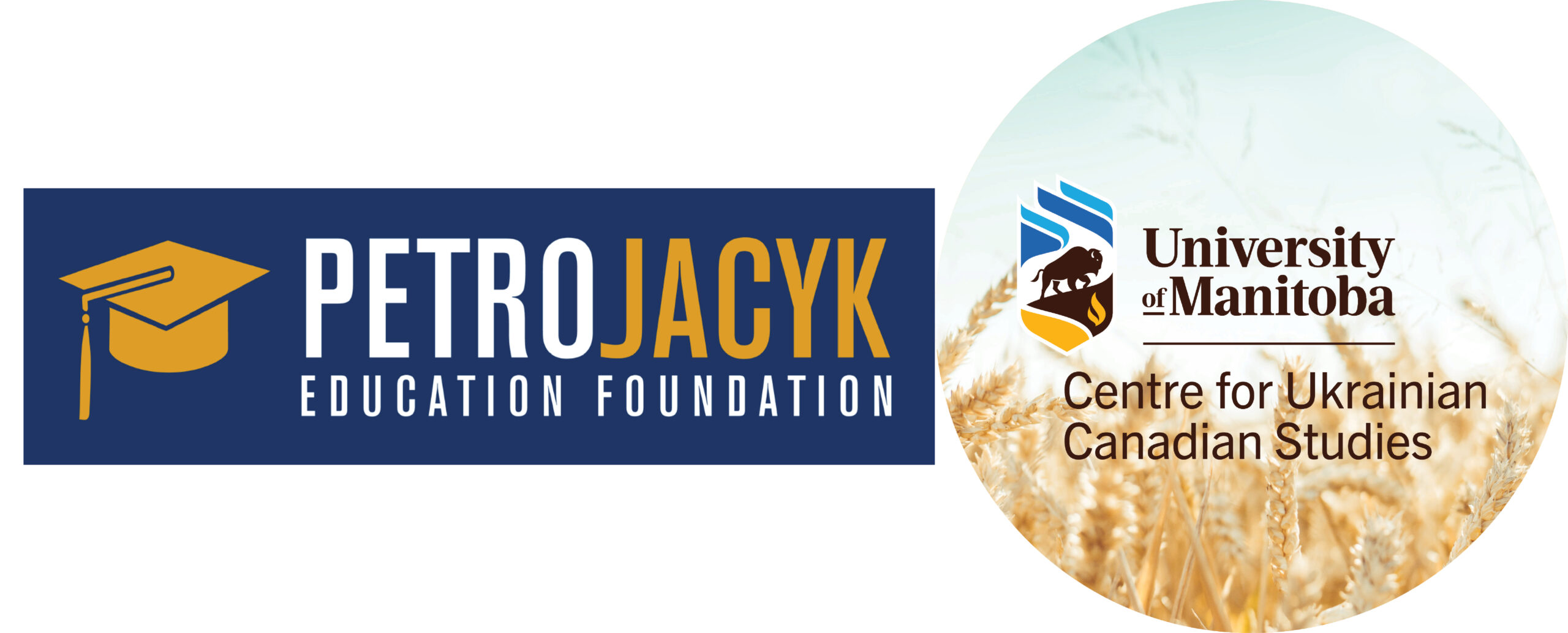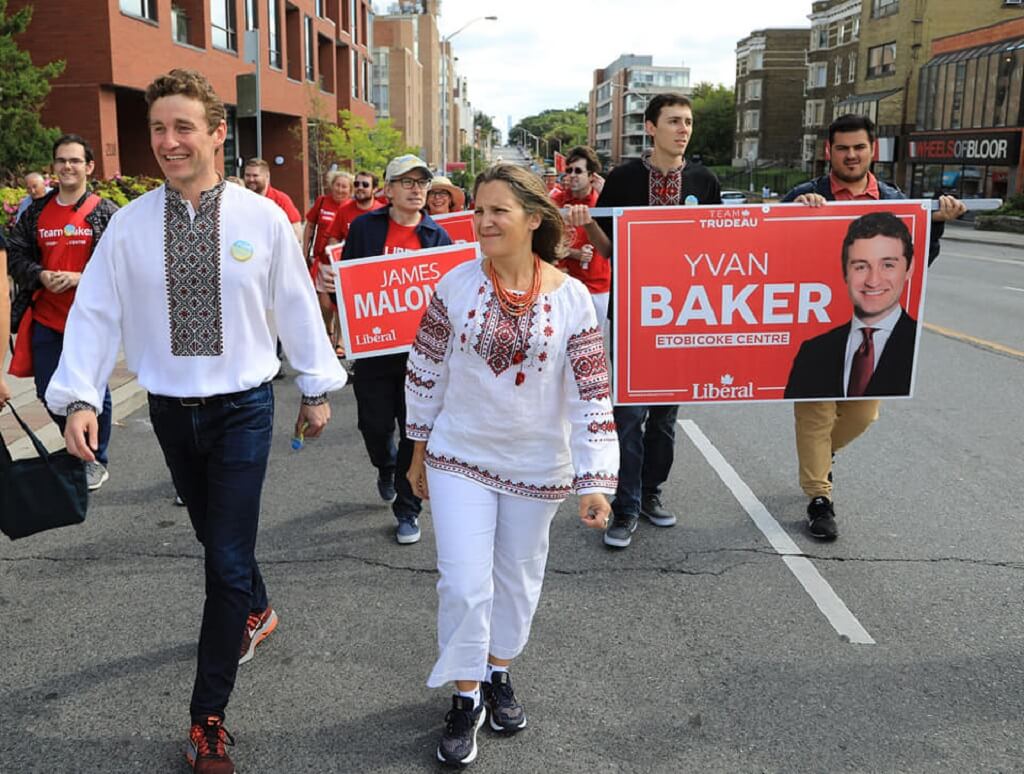Marco Levytsky, NP-UN Western Bureau Chief.
On Sunday, October 21, 2018, Toronto’s Holodomor Memorial was unveiled at the Princess Gate entrance to the Canadian National Exhibition grounds.
The Holodomor Memorial shows a central position for the iconic sculpture “Bitter Memories of Childhood” by the Ukrainian artist Petro Drozdowsky. This work is a key element that is shared with other Holodomor Memorials around the world, the original having been erected in Kyiv.
It is centered in a beautiful small park, surrounded by three small satellite’ gardens, creating a contemplative narrative where the other important symbols of the Holodomor will be expressed in low relief elements.
This is the seventh Holodomor memorial to be unveiled in Canada. Other cities which house such monuments include, Winnipeg, Calgary, Regina, Windsor and Mississauga.
But what is significant about the date of the opening of the Holodomor Memorial in Toronto is that it was unveiled almost 35 years to the day that the very first such monument – not only in Canada – but in the world – was unveiled.
The date was Sunday, October 23, 1983 and the place was Edmonton’s City Hall and its grounds. It marked the 50th anniversary of the famine-genocide. There had been considerable controversy preceding this unveiling. The Soviet Union, which continuously denied ever having perpetrated such a genocide, exerted considerable diplomatic pressure on the Government of then Premier Peter Lougheed to prevent this unveiling. But not only did Premier Lougheed ignore them, he personally lifted the black drape covering the sculpture of a large broken circle of cold grey metal emblazoned with skeletal hands memorializing the anonymous victims of the Soviet engineered genocide. The monument was sculpted by Ludmilla Temertey, sister of Toronto philanthropist James Temerty, head of the Temerty Family Foundation which donated $500,000 towards the construction of the Toronto monument.
At the opening of the Edmonton monument, which was attended by 8,000 people, Premier Lougheed, who was flanked by University of Alberta Chancellor Dr. Peter Savaryn, declared; “We, in Alberta, will never allow that this tragic event, committed by a totalitarian regime, will ever be forgotten.”
Other speakers included federal Defence Minister Jean Jacques Blais, newly elected Edmonton Mayor Laurence Decore, Ukrainian Canadian Committee (now Congress) President Ivan Nowosad, UCC Edmonton President Dr. Meletiy Snihurowycz and University of Alberta Professor, Dr. Bohdan Krawchenko.
Later that day, at a special Hungry Dinner, sponsored by UCC Edmonton and attended by 2,000 people, University of Alberta President Myer Horowitz drew comparisons between the Holodomor and the Holocaust suffered by his own people.
“Last month, on Yom Kippur, the Day of Atonement, which is the holiest day of those of us who are Jewish, I read silently, while in our synagogue… That service of atonement, which was added following the second World War when millions of my cousins – my Eastern European blood cousins – perished. Never will I read those words again without my thinking as well of the millions of my other blood cousins – your blood cousins, who died of hunger, who died because of a cruel, barbarous, inhuman and programmed famine,” he said.
The unveiling of the Edmonton monument was just the beginning of a long and arduous campaign to bring the truth about this horrendous genocide to light. In fact, the monument itself was defaced with “Nazi lies” graffiti on two occasions. It wasn’t until the publication of Robert Conquest’s “Harvest of Sorrow: Soviet Collectivization and the Terror Famine,” in 1986, that the Holodomor began to be treated seriously by the academic world. And it wasn’t until the fall of the USSR that the Holodomor was officially acknowledged in Ukraine itself.
Even today, a new brand of Holodomor denial has come to the fore. The crux of this new disinformation campaign is the myth that the Holodomor was not a genocide — merely a tragedy, because other nationalities suffered deaths as well.
Well, that’s the equivalent of saying the Holocaust wasn’t a genocide of Jews because other ethnic groups were also killed. Even though both Adolph Hitler and Joseph Stalin committed mass murder on a gargantuan scale that involved people of all kinds of backgrounds, Jews were specifically targeted in the Holocaust and Ukrainians were specifically targeted in the Holodomor. That’s what makes both actions genocide.
The Holodomor has been described as a classic case of genocide by Raphael Lemkin, a Polish legal expert of Jewish origin who wrote the United Nations definition of the term. He described the Famine as a four-pronged attack by the Communist regime against the Ukrainian nation with the intent to destroy: (1) the intelligentsia (“the national brain”); (2) the national churches (“the soul of Ukraine”); (3) the independent peasants (“the repository of the tradition, folklore and music, the national language and literature, the national spirit of Ukraine”); and (4) the cohesion of the Ukrainian people by forced in- and out-migration with the aim of changing the republic’s ethnic composition by reducing the number of ethnic Ukrainians and increasing the number of non-Ukrainians.
And here we get to the heart of why the Holodomor is so relevant today. Those millions of Ukrainians who were starved to death were replaced by ethnic Russians. And those millions of Ukrainians who survived, but were forbidden even to speak about it, became so traumatized, they buried their culture and their national will deep in the ground strewn with the bones of their relatives, friends and ancestors. Many of their descendants became russified. They became “Russian speakers”.
And it is the “defence” of “Russian speakers” that Stalin’s successor in mind, spirit and deed – Vladimir Putin – claims as an excuse to justify his brutal aggression against Ukraine. The genocide of the 1930’s has led to the invasion of today.
International recognition of the Holodomor as a very real and horrendous genocide has come a long way since the unveiling of that first monument 35 years ago. But there still is a long way to go before it becomes firmly entrenched in the annals of history and channels of memory, so that such atrocities will never again be repeated.
Share on Social Media






